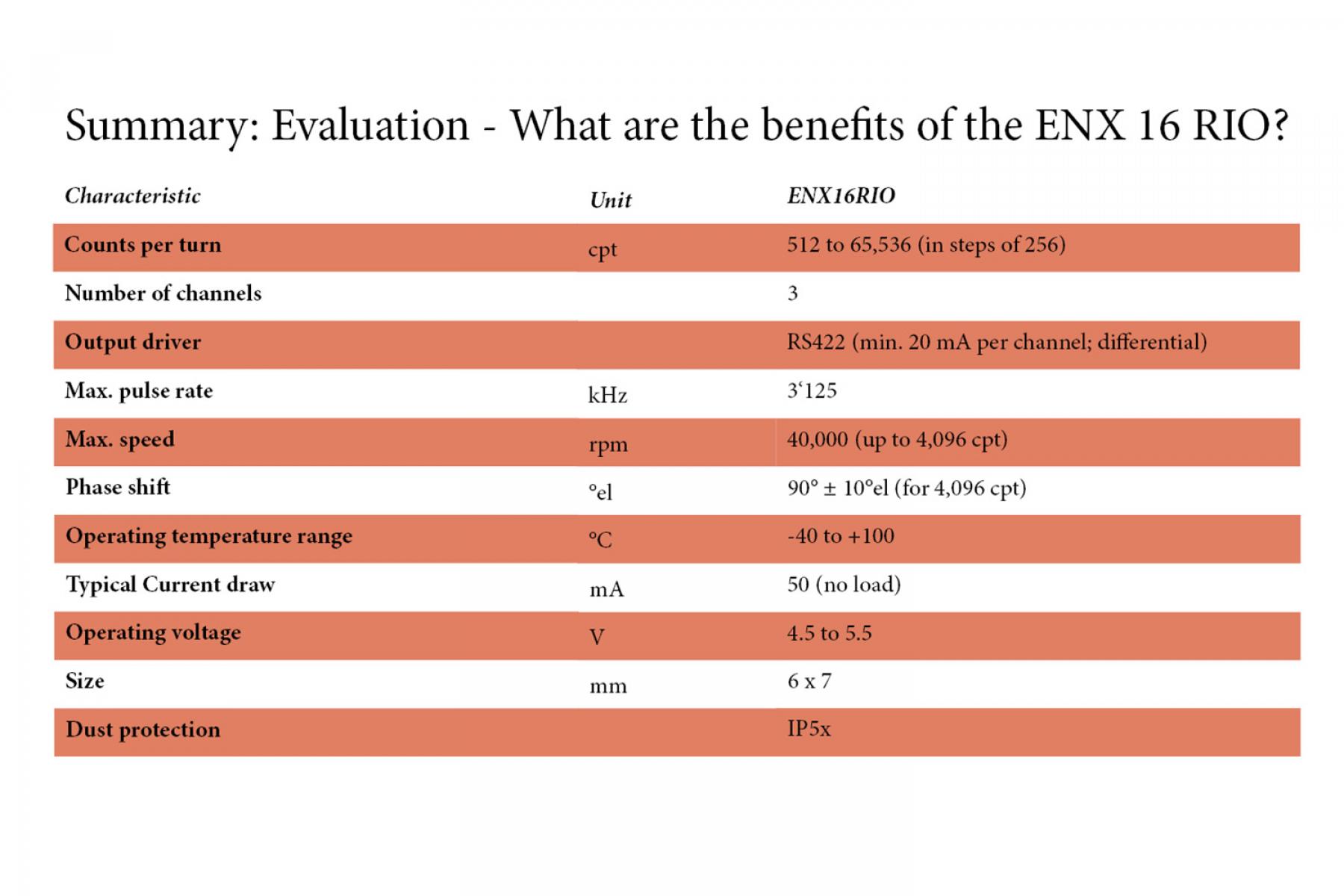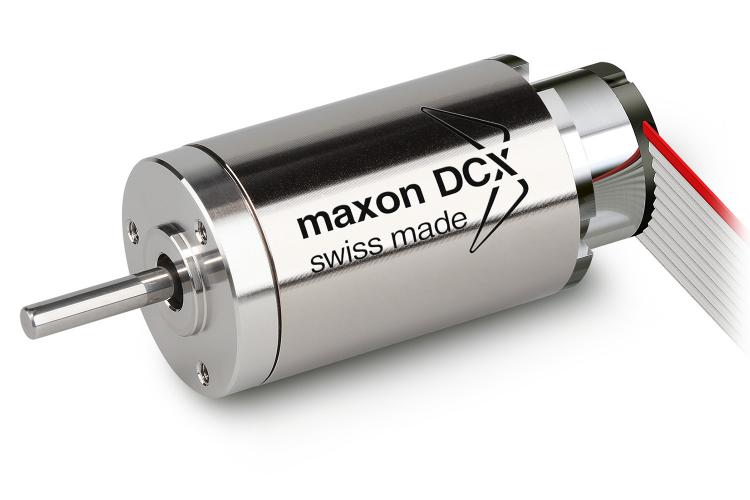The requirements on encoders are continuously increasing. This is particularly true for positioning applications, like the placement of electronic components. The reason for this is the increasing number of electrical contacts and the simultaneous decrease in the housing size of modern, highly complex integrated circuits like microprocessors or programmable logic modules (FPGA). For example, a modern WF-XBGA housing as per JEDEC standard MO-298, with up to 2601 contacts and a 0.4 mm grid size, requires a positioning accuracy of 0.4°m, or 1/900 of a revolution. A rotary encoder suitable for the task should have a ten times higher resolution. For an incremental encoder, this results in a minimum resolution of 2,250 counts per turn (cpt).
For applications with highly constant velocity control, the requirements on the encoder resolution are even significantly higher: Due to the square relationship between the specified maximum deviation of the speed from the set value and the necessary encoder resolution, this task requires encoders with several 10,000 counts per turn. As a rule, the smaller and less inert the drive system, the higher the required resolution.
Encoders should be robust and compact
Both of these applications require not only high resolution, but also a comparatively high maximum speed and error-free encoder function for an agile, dynamic final system. Not least, even a high-resolution encoder should use as little additional installation space as possible and be electrically and mechanically robust.

ENX 16 RIO Encoder
The new maxon solution with 65,536 counts per turn
The new maxon ENX 16 RIO encoder (where RIO stands for Reflective, Interpolated, Optical) fulfills the requirements for a high-resolution optical encoder with an especially compact size. Its use of latest technologies allows it to reach up to 65,536 counts per turn. And its housing with 16 mm outer diameter and a length of 7 mm is very robust mechanically due to its injection-molded construction.
Installed directly on the motor shaft
The ENX 16 RIO is an incremental three-channel encoder with differential EIA RS422 compatible output signals. The resolution can be configured at the factory, from 512 counts per turn up to the maximum. For resolutions up to 4096 counts per turn, the encoder works without error at speeds as high as 40,000 rpm. When the resolution doubles, the speed is halved. This is due to the maximum output pulse frequency of 3 MHz. However, even at a very high resolution of 16,384 counts per turn, 10,000 rpm are still possible – and all this in a very compact size. The high speed is supported by the external-bearing construction without spring-like connecting elements. By mounting the target directly onto the motor shaft, the full dynamic range can be used in positioning applications.
The ENX 16 RIO encoder uses a disk with 256 lines. With the programmable interpolation up to 256, a resolution of up to 65,536 counts per turn can be achieved. With the quadrature evaluation of increments, the maximum position resolution is 18 bit. Despite its high resolution, the encoder is very robust: Its operating temperature range is -40 °C to +100 °C, and in combination with matching motor flange, the plastic-encased circuit board provides a dust-proof housing in accordance with IP5x. This optical encoder is therefore also suitable for “dirty” environments. The ENX 16 RIO gives engineers a modular solution for a wide range of maxon DC motors. Combinations are possible for direct drive solutions based on series DCX 16 to DCX 35, EC-4pole 22, and EC-4pole 30, as well as the iron-wound internal-rotor motors EC-i 30, EC-i 40, and EC-i 52.

From 3D printers to surgical robots
Table 1 summarizes the key data of the new ENX 16 RIO encoder. This new high-resolution encoder is especially suitable for high-precision position and velocity control. Its high maximum pulse rate and external-bearing construction mean that hardly any compromises are necessary when it comes to speed and control dynamic. The robust ENX-format housing, the wide operating temperature range, the differential RS422 interface, and the dust-proof installation on specified maxon motors enable new solutions in many high-end applications, such as precision measurement, printing machines, delta robots, 3D printers, plotters, surgical robots, haptic applications, electronic component placement, and many others. Please do not forget: In order to fully exploit the capabilities of the new encoder, the position and speed controllers need to be sufficiently dynamic and properly adjusted. This is possible with maxon’s high-performance motion controllers like ESCON, EPOS4 and MAXPOS. The mechanical output components also need to satisfy the highest quality and precision requirements. For these reasons, it is preferable to install high-resolution encoders in direct-driven applications.
Author: Dr. Volker Schwarz





